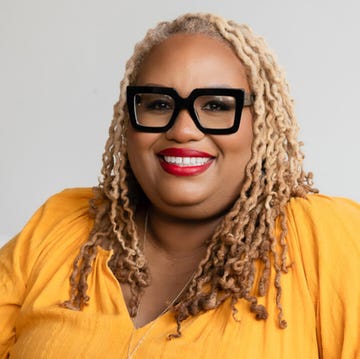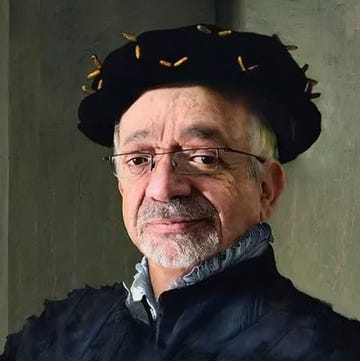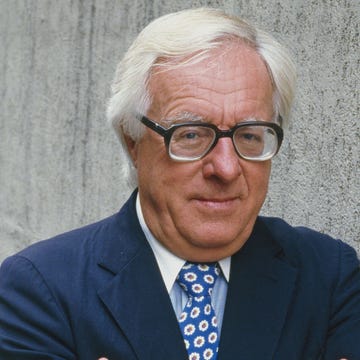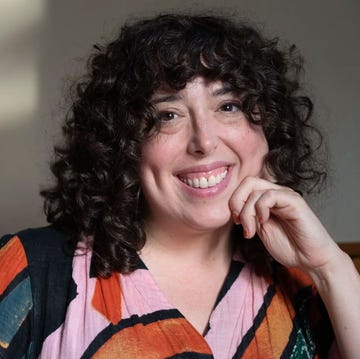I’ve long been fascinated by what I imagine as the neo-nascent literature of Los Angeles—the writing from the 1920s and early 1930s, just when the city was finding its shape. I think of Harry Leon Wilson’s Merton of the Movies, published in 1922 and perhaps the earliest film industry novel, and Carroll and Garrett Graham’s Queer People (1930), a Hollywood satire so scabrous that, the novelist and screenwriter Budd Schulberg once recalled, “you would not dare to bring [it] into a motion picture studio unless you hid it in a brown wrapper and locked it in your middle desk drawer.” I think of Upton Sinclair’s 1926 epic Oil!, inspired by the life of Edward Doheny, and Louis Adamic’s Laughing in the Jungle (1932), a precursor to the major works of Carey McWilliams and Mike Davis. In his 1926 essay “Los Angeles. A Rhapsody,” Aldous Huxley, tongue firmly in his cheek, calls the place the “great Joy City of the West.”
That great Joy City, it turns out, is also the setting for Aben Kandel’s novel Rabbi Burns, published in 1931 and long since out of print. Newly reissued by Felix Farmer Press, a boutique imprint specializing in “the art, business, culture and history of the Hollywood film,” the book was scandalous enough when it first appeared that five libel suits were purportedly filed against the author, whose writing one critic derided as bearing “the stench of smut and smoking car language.” The titular character was modeled on Edgar Magnin, who served as senior rabbi of Wilshire Boulevard Temple, the oldest Jewish congregation in Los Angeles, from 1919 to 1984; his many achievements included the building of the temple’s massive Byzantine Revival synagogue, completed in 1929. It is that project—or a fictionalized version of it—that catalyzes Kandel’s narrative, which begins on Yom Kippur with Burns attempting to raise funds for the construction, a pointedly sardonic situation, given that Yom Kippur is “the holiest of holy days,” the Day of Atonement, intended to be spent in fasting and in contemplation, a day of prayer.
To Rabbi Burns, however, it also represents a chance to flatter the philanthropist Clifton Untermeyer by asking him to speak at services. The new synagogue, after all, will cost a million dollars to build. Kandel frames the dynamic in the first few pages of the novel. “For years,” he writes of Burns, “he had been working and praying towards the flowering of that dream. To preside over a house of worship as elaborate and magnificent and costly as Sid Grauman’s Chinese Theater.”
That’s a terrific setup, containing many of the contradictions that define Los Angeles: glitz and grit, superficiality and substance, the call of community (or spirit) and the restless demands of the ego.
The desire to do good and the desire to do well.
Kandel is a deft writer, with a screenwriter’s talent for creating scenes. (Although he published his last significant book in 1936, he continued to crank out scripts for decades; as former Los Angeles Times film critic Kenneth Turan tells us in his introduction, “He shared writing credit on both Mervyn LeRoy’s classic 1937 They Won’t Forget and 1970’s horror item Trog.”)
If Rabbi Burns isn’t a Hollywood novel per se, the movie business, as evidenced by that reference to Grauman, is never far away.
But more to the point is Kandel’s portrait of Jewish Los Angeles, which is sharp and direct. He understands the ins and outs, both within the community and in regard to its relationship with the city at large. The between-the-wars years were a complicated period for Jews in America, as the children of the first generation of immigrants began to move into the middle class. In part, this meant a focus on assimilation, with all the tensions that provokes.
Kandel is brilliant on the subject, understanding the impulse but aware of its discontents. During one particularly vivid set piece, three characters share a break-the-fast dinner at a kosher restaurant. One is Mordecai Solon, publisher of the Los Angeles Jewish Sentinel, a Jewish weekly. The others are his employees, Adam Krasoff and Louis Levine. As they eat, they discuss what Solon labels “a modern type of Jew.” Krasoff argues: “Yes—and now that they have become Americanized, they’re less liked.”
The issue, he continues, is that “when the Jew was a bogeyman—…junk dealer, peddler with pack on his back, pawnbroker—everybody knew him. He was easy to identify. But now that he’s becoming Americanized like the Gentiles…he’s become a menace to all good Americans.”
That this remains as true today as it has ever been is one of the discomforting ironies of the book.
The character of Burns represents a version of this Americanizing. He is clean-shaven, well-appointed, spiritual adviser to the stars. Neither beard nor tefillin for him, no Hebraic chanting. He is a rabbi for whom the rough edges of identity have been burnished clean.
And yet, where does that leave him? As we move through the novel, he gets much of what he desires but not the most important things. “The Gentiles had perfect poise,” he considers, “laughing, chattering, easy-mannered, guzzling gracefully, owning everything they breathed and touched without pausing to say thank you for the privilege of living. In recent years, Burns had almost forgotten that everywhere Jews had to say thank you for being allowed to live, but the private little looks of these people and their private little laughter brought it back to him. Yes, I better say thank you for letting me live and breathe among you, my benevolent goyim.”
In the end, it comes down to faith, which is what the rabbi lacks. Or no—not lacks, but has misplaced. For him, faith is tied up in illusion: another paradox. In a city defined in many ways by striving, what happens when ambition is insufficient? Such a question sits at the center of so much of the literature from this neo-nascent era, when the booster myths were receding before a more encompassing range of complexities. “He wished fervently for once that he believed in God,” Kandel writes late in the novel, “honestly and profoundly believed with the pure, simple faith of a true believer, that he might now find solace in prayer. But he did not believe. And to pray would have been one more mockery.” Rabbi Burns, in that sense, finds himself caught in the middle, smart enough to know what he is missing but without any ability to make it right.•













